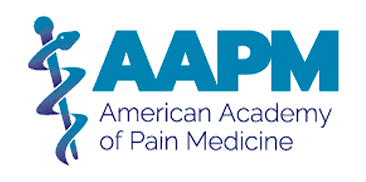Today AAPM President Ajay D. Wasan, MD MSc issued the following message to members about the CMS Proposed ’21 Medicare Physician Fee Schedule and its impact on pain medicine specialists.
Dear Colleagues,
I am writing today to inform you about one of AAPM’s recent advocacy efforts regarding payment policies and rates for pain medicine specialists. On August 3, 2020, the Centers for Medicare & Medicaid Services (CMS) issued a proposed rule that includes proposals to update payment policies and payment rates for services furnished under the Medicare Physician Fee Schedule (PFS) on or after January 1, 2021. While the proposed rule predicts an almost 11% overall reduction in payments, the impact will not affect all physicians and specialties in the same manner. In fact, Pain Management specialists may realize a 7% increase overall in Medicare payments.
As you may know, the Social Security Act, that established Medicare, requires that increases or decreases in relative value units (RVUs) may not cause the amount of expenditures for the year to differ by more than $20 million from what it would have been in the absence of any changes. If the threshold is exceeded, adjustments are made to the dollar conversion factor (CF) to maintain budget neutrality.
For 2021, the primary reason for the adjustments is due to significant increases in the RVUs for the revised Office/Outpatient Evaluation and Management (E/M) services (99202-99215). The proposed rule confirms CMS’s intention to implement these new codes and finalize guidelines and payment rates. The increases are based on recommendations on resource costs from the AMA/Specialty Society RVS Update Committee (RUC), which AAPM participates in and advocates on behalf of its members. Since office/outpatient E/M services account for approximately 20% of overall expenditures, an increase in the value for these codes makes a substantial impact on the fee schedule. As a result, the proposed rule estimates a conversion factor (CF) of $32.26 which is a $3.83 reduction from the 2020 CF of $36.09.
Impact on Pain Physicians
Pain specialists who provide multimodal care, including a mix of initial and follow up evaluations in addition to the procedures they perform, are likely to see greater reimbursement for the E/M visits and greater overall practice revenue. Nevertheless, despite CMS’ goal of reducing reimbursements for procedures, the AAPM representatives working with RUC will continue to fight for appropriate procedure reimbursement and challenge any and all attempts to reduce these payments in our specialty.
For some time, CMS policies and reimbursement decisions have effectively shifted reimbursement from procedures toward more comprehensive care-based services such as E/M services. This is reflected in the current plan to not apply the E/M increases to those E/M services included in surgical procedures with a 10 and 90-day global period. In other words, pain specialists who practice multimodal care and integrate the use of procedures, medications, physical therapy, and other modalities are likely to see an increase in practice revenue from their E/M services. These changes will encourage physicians to review treatment plans, establish long term goals, and focus more on patient engagement.
The current trend by pain medicine specialists to offer multimodal services with an appropriate mix of E/M services not only improves patient care, it also supports the financial health of physician practices.
Budget Neutrality and the Public Health Emergency
The AMA and many specialty societies had proposed to CMS that the budget neutrality adjustment should be waived considering the COVID-19 public health emergency. While the proposed rule did not accept that recommendation, we encourage you to submit comments. The comment period is open until October 5, 2020.
AAPM leadership and staff will continue to review possible actions in collaboration with the AMA and other specialties societies to reduce the financial hardship on physicians imposed by the negative change to the dollar conversion factor.
You can find more details on the AAPM website regarding this advocacy effort. AAPM leadership and staff will continue to review possible actions in collaboration with the AMA and other specialties societies to reduce the financial hardship on physicians imposed by the negative change to the dollar conversion factor.
Thank you for your dedication to pain medicine. We stand with you and your patients and will continue to work to influence legislators, payors, and others in position to set policies.
Ajay D. Wasan, MD MSc
President AAPM
